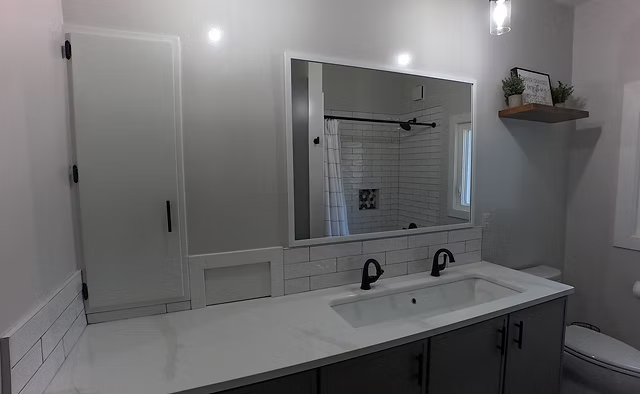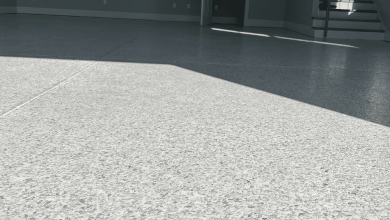Above the Grime: A Guide to Roof Cleaning

Roof cleaning is an essential, yet often overlooked, aspect of home maintenance. It not only enhances the aesthetic appeal of your home but also extends the lifespan of your roofing materials. Over time, roofs can accumulate a variety of contaminants, from algae and moss to dirt and debris. This buildup can cause significant damage if left unattended, leading to costly repairs or even a complete roof replacement.
Roof Cleaning
The purpose of roof cleaning is to remove these harmful substances and prevent their recurrence, preserving the structural integrity and appearance of your roof. Many homeowners might not consider roof cleaning a priority, underestimating the potential damage that can occur from environmental and biological elements. However, proactive roof maintenance, including regular cleaning, can save substantial amounts of money in the long run by avoiding major repairs.
In this guide, we will explore the different types of roof contaminants, the most effective cleaning methods, and whether to choose a do-it-yourself approach or hire professional services. Additionally, we’ll discuss the importance of using environmentally friendly cleaning solutions and the impact of roof cleaning on your home’s overall health and safety. Understanding the basics of roof cleaning can help homeowners make informed decisions about maintaining their home’s topmost protective barrier.
The Importance of Regular Roof Maintenance
Regular roof maintenance, including cleaning, is crucial for several reasons. Firstly, a clean roof enhances the curb appeal of your home, increasing its overall value. A well-maintained roof contributes to the aesthetic harmony of the entire property, leaving a positive impression on visitors and potential buyers alike.
Moreover, regular roof cleaning prevents the buildup of contaminants that can compromise the structural integrity of the roof. Algae, moss, and lichen can retain moisture, leading to the deterioration of roofing materials over time. This can result in leaks, water damage, and mold growth inside the home, posing health risks to occupants and requiring costly repairs.
Furthermore, neglected roofs are more susceptible to damage from environmental factors such as UV radiation, wind, and temperature fluctuations. Cleaning removes debris and organic matter that can trap moisture and accelerate the degradation process. By keeping the roof clean and free of debris, homeowners can extend its lifespan and minimize the need for extensive repairs or premature replacement.
Regular maintenance also allows homeowners to identify and address minor issues before they escalate into major problems. Routine inspections during cleaning can uncover signs of damage, such as cracked shingles or deteriorating flashing, enabling timely repairs to prevent further damage and maintain the roof’s integrity.
Types of Roof Contaminants
Understanding the various types of roof contaminants is crucial for effective roof maintenance. These contaminants not only detract from the visual appeal of your roof but also pose risks to its structural integrity. The most common types of roof contaminants include:
Algae
Algae is a common sight on many roofs, particularly in humid and wet climates. It appears as a black or green film and is often mistaken for dirt or soot. Algae thrives in moisture and can spread quickly across roof surfaces, especially on asphalt shingles where limestone filler provides a food source. While algae itself may not cause significant damage to roofing materials, its presence can lead to other issues, such as the growth of moss and lichen.
Moss
Moss is a green, cushion-like plant that tends to grow in thick mats on roofs in damp, shaded areas. Unlike algae, moss has the ability to retain a large amount of water, which can lead to rot and deterioration of roofing materials. Over time, the weight and moisture of moss growth can cause roofing materials to warp, crack, or lift, which compromises the roof’s ability to shed water effectively.
Lichen
Lichen is a composite organism that arises from algae or cyanobacteria living among filaments of fungi in a symbiotic relationship. It forms a crust-like or leafy growth on shingles and can be particularly hard to remove. Lichen’s roots penetrate into the shingles, which can cause pitting and lead to leaks and other damage.
Dirt and Debris
Dirt, leaves, and other debris can accumulate on roofs due to wind and storms. While these contaminants may seem harmless, they can trap moisture against the roof surface and promote the growth of algae, moss, and lichen. Additionally, accumulated debris can obstruct water flow and lead to water pooling, which increases the risk of leaks.
Pollutants and Bird Droppings
Chemical pollutants from industrial emissions and bird droppings can also damage roof surfaces. These substances are acidic and can erode roofing materials over time. Regular cleaning is necessary to remove these potentially harmful pollutants and maintain the roof’s structural integrity.
Each type of contaminant requires specific strategies for removal and prevention, which will be discussed in the following sections on roof cleaning methods. By identifying and understanding the nature of these contaminants, homeowners can adopt the most effective cleaning techniques to protect their roofs.
Methods of Roof Cleaning
As per Happy Clean, one of the best roof cleaners in Dublin, shared with us: “Effective roof cleaning methods can vary depending on the type of roofing material and the specific contaminants present. It is essential to choose the right method to ensure that the roof is thoroughly cleaned without causing damage. Here are the primary techniques used in roof cleaning:
Pressure Washing
Pressure washing involves using a high-pressure water spray to remove dirt, algae, moss, and other debris from the roof surface. This method is particularly effective for removing extensive grime and can provide immediate results. However, it requires careful handling to avoid damaging the roofing materials, especially for asphalt shingles or older roofs. The intense water pressure can strip away granules from shingles, leading to accelerated aging and vulnerability to the elements.
Soft Washing
Soft washing is a gentler alternative to pressure washing and is recommended for most residential roofs. This technique uses lower water pressure combined with specialized cleaning solutions that kill algae, moss, and lichen. The solution is applied to the roof and left to sit for a period before being rinsed off with a low-pressure water stream. Soft washing not only cleans the surface but also inhibits the growth of new organisms, providing a longer-lasting clean than pressure washing alone.
Chemical Cleaning
Chemical cleaning, or “no-pressure” roof cleaning, involves the application of chemical solutions without the use of any pressure washing. These chemicals, often containing bleach or other biocides, are designed to kill biological growths and loosen dirt and debris. This method is highly effective for removing stubborn biological contaminants and is less likely to cause damage to delicate roofing materials. However, homeowners must choose environmentally friendly and roof-safe chemicals to prevent damage to plants and animals around the home.
Manual Removal
For roofs with heavy moss and debris buildup, manual removal might be necessary before any washing can be effective. Using tools like scrapers or soft brushes, larger debris can be carefully removed by hand. This method is labor-intensive but crucial for preventing damage during subsequent washing, especially for roofs that are particularly vulnerable or damaged.
Combination Methods
Often, a combination of these methods is the best approach. For example, a roof may be treated first with a chemical solution to kill and loosen moss and algae, followed by a gentle soft wash to remove the remnants. This comprehensive approach ensures thorough cleaning while maintaining the integrity of the roofing materials.
Choosing the right cleaning method is dependent on several factors, including the type of roof, the extent and type of contamination, and the roof’s overall condition. Homeowners should consider these factors or consult with professional roof cleaners to determine the most effective and safe cleaning strategy for their specific situation.”
DIY Roof Cleaning: Tips and Safety
For homeowners who prefer to take on roof cleaning themselves, it’s vital to prioritize safety and efficiency. Here are some tips and guidelines to ensure that the DIY roof cleaning process is conducted safely and effectively:
Safety First
Personal Protective Equipment (PPE): Always wear non-slip shoes, gloves, and eye protection. Consider a safety harness if your roof is particularly steep or high.
Ladder Safety: Ensure your ladder is stable and secure. Use a ladder stabilizer for added safety and avoid working alone.
Be Aware of Your Surroundings: Keep clear of power lines and be mindful of your footing to prevent slips and falls.
Choose the Right Day
Weather Conditions: Opt for a mild, overcast day to clean your roof. Avoid windy or excessively hot days, as this can make the roof surface slippery and hazardous.
Preparing the Roof
Clear Debris: Before applying any cleaning solutions, remove loose debris with a leaf blower or soft broom. This prevents blockages in gutters and downspouts and makes the cleaning process more effective.
Protect Landscaping: Cover plants and grass around the house to protect them from any runoff of cleaning chemicals.
Selecting Cleaning Solutions
Environmentally Friendly Products: Choose cleaners that are safe for your roof type and local environment. Avoid harsh chemicals like chlorine bleach if possible, as they can cause discoloration and damage to plants.
Proper Dilution: Dilute the cleaning solution according to the manufacturer’s instructions to ensure it is effective without being overly harsh.
Cleaning Techniques
Soft Washing: Use a garden sprayer to apply the cleaning solution evenly across the roof. Allow it to sit for the recommended time to break down the moss, algae, and dirt.
Gentle Rinse: Rinse the roof with a low-pressure hose, starting from the top to allow the water to flow downwards naturally. This prevents water from getting under the shingles.
Regular Maintenance
Routine Inspections: After cleaning, inspect your roof regularly for any signs of damage or recurring growth. Catching problems early can prevent them from becoming severe.
Know When to Call Professionals
Assess the Situation: If your roof is extremely dirty or you’re unsure about your ability to safely clean it, consider hiring professional roof cleaners. They have the expertise and equipment to handle challenging cleaning jobs safely and effectively.
DIY roof cleaning can be a rewarding project that maintains the aesthetic and structural integrity of your home. However, it requires careful preparation, appropriate tools, and adherence to safety practices. Homeowners should weigh the benefits and risks before deciding to undertake roof cleaning on their own.



